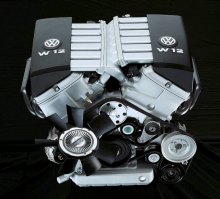It's 1993, the last race of Alain Prost. On the podium, Senna
broke
their cold war and asked, 
|
It's 1993, the last race of Alain Prost. On the podium, Senna
broke
their cold war and asked, 
|
Time TunnelFerrari 250LM- The car that inspire the 360 Modena  Many journalists said the air scoop over the rear wheel arches of 360 Modena revived their memory of the 250LM. If you don't know this car, here is the picture. 250LM was launched in 1964 as the Ferrari's weapon in sportscar racing. It won Le Mans in the following year. It's Enzo's first mid-engined machine, powered by a 320hp 3.3 litres Columbo V12 at 9 inches behind the driver.
|
Ferrarri's platform strategy'Even Ferrari must implement a standardised platform strategy', said Montezemolo, 'We cannot afford to fund four different platforms for four different models. The choice of light aluminium space frame technology was not made for just one model.' It is known that the F60, successor of F50 will be loosely based on 360 Modena's space frame chassis, although the flexibility of aluminium space frame allow great changes in dimensions and rigidity. Internally known as FX, the F60 will be powered by a 6.0 litres V12 with 4-valves head, as the use of variable valve timing in both intake and exhaust valves is too complex for the 5-valves head. In fact, the F1 engines had changed to 4V many years ago. Expect maximum power to be around 600hp. As before, the next Maranello will continue to share platform with the 456GT 2+2. Therefore Ferrari will have only 2 platforms - one mid-engined and one front-engined. |
Reader's Letter |
|||
|
|
||
| Hi,
I really like your site - lots of really good information and
interesting
bits. However, I was a bit surprised to see that you had a
mis-captioned Perhaps you wonder how I know this - the picture is of my 21! No problem with you using it, but please make sure it is captioned correctly. :-) Keep up the good work on the site. Andrew Edney |
|||
| I read quite a lot of
magazines,
what a pity none of them ever tried to have a technical insight into
Volkswagen's
V5 (previously called VR5, if you remember). It seems VW is not very
eager
to reveal its secret.
The question is : how can a five cylinder formated in Vee
angle manages
to balance ? Apart from the earliest samples, the V5 has been proved to
be as silky smooth as any V6, so there must be some tricky counter
weights
or balancer shafts inside. Anyway, journalists have no idea at
all.  It is interesting yet confusing to analyse the engine development strategy of Wolfsburg and its subsidiary in Ingolstadt. "What a mess" is probably the best phrase to describe it. Since the early 90's, we saw the engine programs of VW and Audi conflicted times and times. While Audi had a 174hp V6, VW created a VR6 having the same size and the same power (just 2hp down). Then, Audi's 1.8 and 1.8T unit are overlapped by VW's 2.0 sohc and 2.3V5 respectively. As Audi upgraded its V6 to 5 valves, Wolfsburg also put 4-valves head into the VR6, which could also compete with Audi TT's high boost 1.8T. |
On one hand the group is cutting cost by sharing platform, on
the other
hand Ferdinand Piech let the internal competition of his engine
departments
exists.
A VW board member commenting this, 'Whenever Piech want things done he put two teams against one another. Audi people are terrified of VW's move upmarket. And it works.' How to explain the development of odd engines - V5, VR6, W12,
W16 and
W18 ?  It is known that Piech originated the idea of 5-cylinder in-line during his years as the head of R&D of Audi. The idea eventually turned out to be a driving force to Audi for more than a decade. During his years with Porsche, he designed the turbo flat 12 for the 917 racing car, also in his brain was a 16 cylinder engine but never realised. So, it is probably his enthusiasm about the no. of cylinders lead to the birth of VW's W12, Bentley's W16 and Bugatti's W18. |
 To other car makers, the cylinder war makes no sense. Considering V12 is the smoothest configuration, while could be easily fitted in many luxurious cars or supercars, who need more cylinders ? BMW showed a V12 displacing in excess of 6 litres and capable of 627hp, who needs a bigger engine ? W-formation engine has some advantages in packaging. For instance, the W12 is just as short as a four cylinder mounted longitudally. However, it is likely to have more frictional loss (thus less powerful) and having difficulties in cooling (thus incapable for motor racing). It won't be lighter than any V12. W16 and W18 are even overweight for supercars. No wonder they are reserved for only Bugatti and Bentley. |